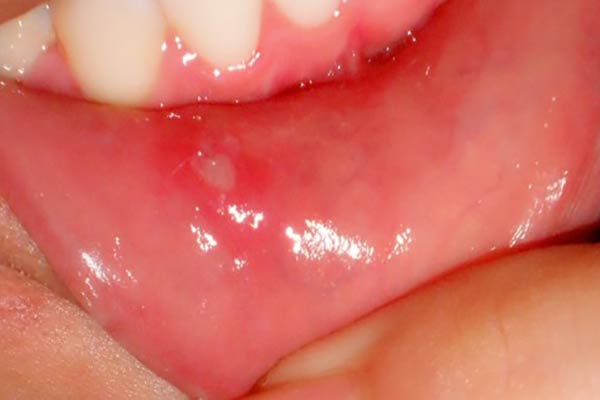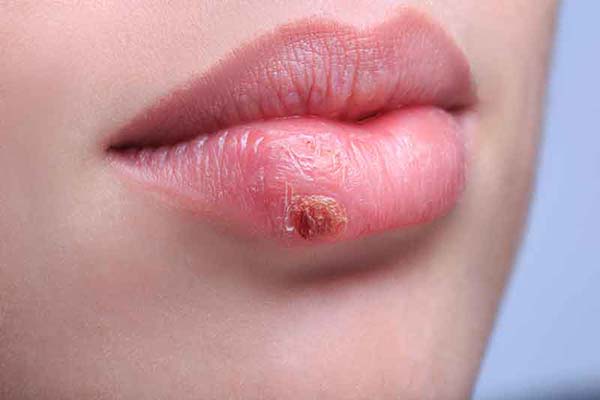Dentures and a sore mouth
-
Mouth irritations and lesions
-
Mouth ulcers and oral thrush
-
Treatment of mouth sores
Today we’ll take a look at the some of the oral sores that people get, particularly those who have troublesome dentures.
At the Denture Clinic in North Street Dudley, we often see patients who, because of ill-fitting dentures, suffer from sore spots on their gums.
Aphthous ulcers most common irritations
Mouth irritations and oral lesions are swellings, spots or sores on your gums, the soft tissues on the side of your mouth, lips or tongue.
Although there are numerous types of mouth sores and disorders, among the most common are Aphthous ulcers, cold sores, leukoplakia and candidiasis (thrush).
If you have a mouth sore, you’re not alone with about one-third of all people in the UK affected at some point. Nonetheless, mouth sores, irritations and lesions can be painful, unsightly and can interfere with eating and speaking.
A dentist should examine any mouth sore that persists for a week or more. If they continue a biopsy may be advised, and this can usually determine the cause, ruling out such severe diseases as cancer and HIV.
Aphthous ulcers
Indicators of a mouth sore or oral lesion
The following signs may indicate a mouth sore or oral lesion: Aphthous ulcers are small white swellings or sores surrounded by an area of redness. While canker sores are not contagious, they are often confused with cold sores, which are caused by the contagious herpes virus.
The Colgate Oral and Dental Care Resource Centre offer the following advice . . . It may help to remember that canker sores occur inside the mouth, while cold sores usually occur outside the mouth. Canker sores can recur, and can be minor (small), major (larger) or herpetiform (multiple, in groups or clusters).
Aphthous ulcers are common and often recur.
Although the exact cause is uncertain, some experts believe that immune system problems, bacteria or viruses may be involved. Factors such as stress, trauma, allergies, cigarette smoking, iron or other vitamin deficiencies can all be considered in diagnosis, as well as hereditary issues.
Herpes simplex – cold sores
Cold sores, also called herpes simplex, are groups of painful, fluid-filled blisters around the lips and sometimes under the nose or around the chin. Cold sores are usually caused by a type of herpes virus and are very contagious.
The first infection often occurs in children, sometimes without symptoms, and may be confused with a cold or flu. Once a person is infected, the virus stays in the body, occasionally causing recurrent attacks. For some people, however, the virus remains inactive.
Cold sore
Leukoplakia – white patches in the mouth
Leukoplakia presents as white patches in the mouth and can on the inner cheek, gums or tongue. It is often associated with smoking and smokeless tobacco use, although other causes can include poorly fitting dentures, broken teeth and chewing on one’s cheek. Again a biopsy may be recommended.
Candidiasis – oral thrush – is a fungal infection caused by Candida albicans (a yeast)
Creamy, yellow-white or red patches present on moist surfaces in the mouth and tissues under the patch can be painful. Thrush is most common among denture wearers, newborns, those debilitated by disease, and those whose immune system is not functioning correctly. People who have a dry mouth, or who are taking or have just completed antibiotic treatment, are also susceptible.
Simple treatment of mouth Irritations and oral lesions
Treatment varies according to the type of condition you have, but many clear up on their own.
Aphthous ulcers (canker sores) usually heal after 7 to 10 days, although recurrent outbreaks are common. Non-prescription topical ointments and pain relievers can provide temporary relief. Rinsing with antimicrobial mouth rinses may help reduce the irritation and sometimes antibiotics are prescribed.
Cold Sores – the blisters usually heal in about a week. Because there is no cure for herpes infections, the blisters may re-occur during times of emotional upset, exposure to sunlight, allergies or fever. Non-prescription topical anaesthetics can provide temporary relief.
Leukoplakia treatment begins by removing the factors causing the lesions. For some patients that means quitting tobacco use. For others, it means removing ill-fitting dentures and replacing them with properly fitting ones.
Candidiasis treatment consists of controlling the conditions that cause outbreaks. Cleaning dentures are essential in preventing denture-induced problems, and it may be advised to remove dentures at night.





